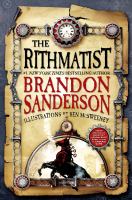Here’s what’s new in the library: come pick something up to read over break! If nothing here appeals, we’ve got hundreds more to choose from.
The 5th Wave, by Rick Yancey
Who can you trust when anyone around you might be an alien in disguise – a hostile, deadly alien bent on conquering Earth? Cassie is on her own, trying to get her brother back, and is understandably wary of the people she meets (no matter how handsome). The aliens are wiping out humans – and they’re winning.
I’ll Give You the Sun, by Jandy Nelson
A novel in two parts, alternating between Noah and his twin sister Jude. There are three years separating Noah and Jude’s stories, with tragedy separating them. Love, loss, and a whole lot of art. Recommended for fans of John Green and Rainbow Rowell.
The Ploughmen, by Kim Zupan
The strange relationship – and similarities – between a deputy sheriff adept at finding missing persons, and a serial killer awaiting trial.
The Rithmatist, by Brandon Sanderson
Sorry, not the sequel to Steelheart (That’s Firefight – it’s coming out in January!) This one’s about a boy who is fascinated by magic he cannot himself use. That magic: chalk drawings that become living (if still two-dimensional) creatures. And someone is using them to kill students.
Stone Mattress: nine tales, by Margaret Atwood
A collection of short stories that include a black widow, a haunted fantasy author, a woman in a retirement home dealing with both protestors and visions, and a woman mistaken for a vampire.
Stranger, by Rachel Manija Brown and Sherwood Smith
A post-apocalypse dystopia. People with strange powers. An ancient, dangerous book. Carnivorous trees made out of crystal. Telekinetic squirrels.
Telekinetic squirrels.
Stranger is finally out, three years after the authors refused an agent’s request to change the sexuality of one of the point-of-view characters from gay to straight. You can read all about it here.
And more!
The Eye of Minds, by James Dashner
Midwinterblood, by Marcus Sedgwick
Monument 14, by Emmy Laybourne
Revival, by Stephen King








